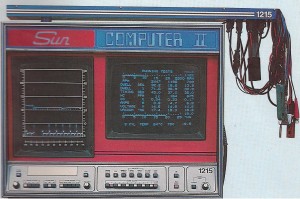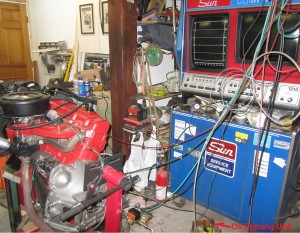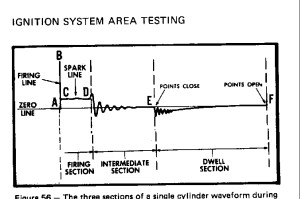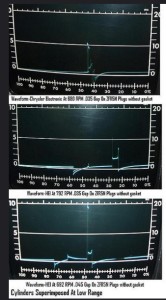Why do some Ignition Diagnostic Testing? Before taking your vintage Plymouth cross country there is the usual concern over the condition of the mechanical and electrical components. A common issue that can ground your vintage Plymouth in an instant whether during starting or cruising can be the ignition system. Testing your vintage Plymouth and related Chrysler product ignition by doing some Ignition Diagnostic Testing prior to your trip can relieve those concerns.
Knowing how good your Plymouth Engine spark plug is firing is hard to know by just holding the wire a distance from a ground while the engine is cranking. Even if you see a spark and guess at it’s good enough (or not) seldom are you satisfied with that common test. There must be more that you can do to get that comfortable feeling that your car can go the distance without an issue.
Areas that need to be checked, without tearing things apart or simply irrationally replacing, include the coil, connections, coil wire, spark plug wires, spark plugs and in some cases ballast resistor or supply voltage.
The Colonial Region has a tester, available to all, to raise that comfort level:
The 1215 Sun Tester is one of the tools which was the most advanced tester available in the mid 80’s and possibly the best for any Plymouth up to that period of time. If you want to see how elaborate the Region Tester is check out this 30 min. video explanation of one 1215 tester partially disassembled:
The Colonial Region tester came from a school in NY that trained auto mechanics. One instructor , Bob Butler, was a member of the Colonial Region. Once technology advanced to cars with their own built in computers, training of mechanics shifted to concepts using scanners plugged into onboard car computers. The opportunity came up for the Colonial Region to get the School’s Sun 1215 tester that has all the built in leads to connect to your vintage engine:
The tester has two screens; the one on the left displays the spark output in graph form with the intensity on the vertical axis and time as a percentage of cycle on the x axis. Several wires are connected from the sun tester to the engine for the diagnosis.
Imagine measuring the spark just before the cylinder. All the upstream ignition components and connections are being evaluated simultaneously! Also if you compare cylinders you can determine if one is weaker than the others and isolate the problem. Intensity of the coil output can be compared to your baseline data to determine if deterioration in the coil or upstream components has occurred relative to when the first rebuild occurred.
Understanding a single cylinder waveform is the first step in being able to diagnose how well that the ignition is at that cylinder. Although the manual is thick and not bedtime reading use of the tester does not require being an expert on all fronts. Knowing how the curve should look is enough to determine if the system is OK or if a certain aspect is deteriorating.
The single cylinder spark wave has the following components:
Although it indicates “points open” & “points close” the tester is also excellent for early 70’s and up electronic ignitions. The curve will look slightly different. Before studying the aspects of the above waveform look at what happens when you compare two different electronic ignitions on a Plymouth slant six and what happens when the plug gap is increased. Comparing waveforms on the same slant six cylinder on the Region’s Sun 1215 Tester is very revealing:
This comparison helps to understand what the waveform can do for the your own backyard tune up:
1) Top curve for Chrysler Product or Plymouth typical stock healthy electronic ignition has a somewhat short duration and peak voltage of about 5000 Volts
2) Middle curve on the same slant six retrofitted with a HEI** (High Energy Ignition) has a longer spark duration but similar peak voltage.
3) Bottom curve on the same slant six but with a modified plug gap .010 in. larger shows a doubling of the peak voltage and shift in the duration/timeframe.
Indirectly the ignition diagnosis monitors plug gap deterioration and/or plug resistance.
So the backyard mechanic, knowing what the curve should look like for each cylinder and the coil for that engine & ignition system can pinpoint if the ignition is operating to specs or has a problem either at one particular cylinder or for the system in general.
There are other tests the Sun Tester can perform including exhaust analysis*. You might find the ignition test to be most useful prior to your cross country trip and developing a level of comfort that your ride is “good to go”. The tester has recently been moved to another Colonial Region member’s home so if you want to check out your ride by doing some Ignition Diagnostic Testing just give a hoot and this website will “hook you up”.
* we will cover in a future article a way to measure the air fuel mixture, anywhere your car goes, with an under hood concealed exhaust gas monitor retrofitted to your ride to help correct fuel issues arising during your vintage Plymouth cross country trip.
** if you want info on how HEI will improve starting and more in your slant six see:
Note: as usual clicking on any picture will enlarge it to your screen size




